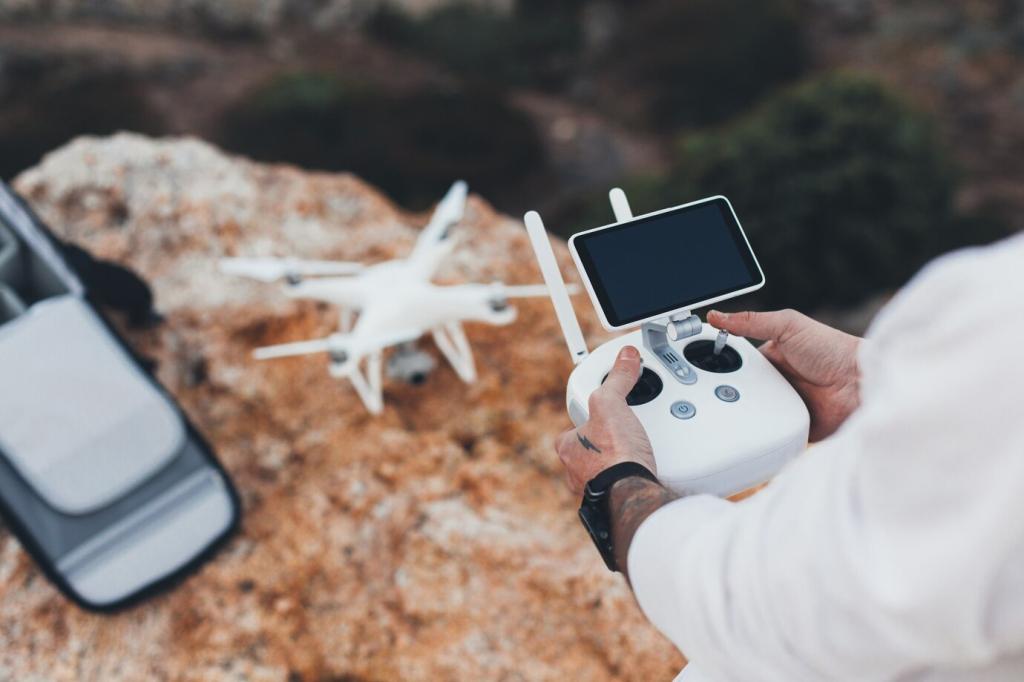Using UAVs for Wildlife Monitoring in Forests
Unmanned Aerial Vehicles (UAVs), commonly known as drones, are transforming the field of wildlife monitoring in forested environments. These innovative technologies allow researchers to observe animal populations, track migration patterns, and assess habitat conditions with unprecedented precision and minimal disturbance to ecosystems. Employing UAVs not only enhances the accuracy and efficiency of data collection but also unlocks new opportunities for conservation by providing insights that would be inaccessible through traditional methods. As UAV capabilities rapidly develop, their role in forest wildlife monitoring is becoming increasingly essential for scientists and conservationists worldwide.

Enhanced Data Collection and Observation
Accessing Remote and Inaccessible Areas
Dense forests often make conventional ground surveys challenging due to obstacles like thick underbrush, steep terrains, and the risk of disturbing sensitive species. UAVs eliminate these barriers by providing a bird’s-eye view that can effortlessly cover expansive or previously unreachable locations. This remote access empowers researchers to monitor elusive wildlife or vulnerable habitats without the need for intrusive methods, reducing the risk of stress or displacement for animals. The ability to reach into the heart of forests opens new avenues for biodiversity studies and the discovery of unknown species.
Real-Time Data Acquisition
One of the significant advantages of UAV use is the capacity to gather real-time data during missions. Drones equipped with sophisticated cameras and sensors can transmit live footage and environmental readings back to operators or centralized stations instantly. This immediate accessibility ensures that conservation teams can make informed decisions swiftly, whether responding to threats such as forest fires or unexpected changes in animal populations. Real-time data not only accelerates field research but also enhances the accuracy of wildlife assessments and supports timely conservation interventions.
Improved Tracking and Identification
UAVs can be outfitted with thermal imaging, GPS technology, and advanced machine learning algorithms, making it possible to track and identify individual animals or flocks even beneath dense forest canopies. These tracking capabilities surpass the limitations of traditional tags or collars by allowing researchers to monitor wildlife discreetly and over large areas. The accurate identification of species and movements contributes to more robust population estimates, migration studies, and behavioral insights, making UAVs an invaluable asset for detailed biological research in complex forest environments.
Previous
Next
Expanding Research Possibilities and Capabilities
Multi-Sensor Technologies for Diverse Data
Modern UAVs can integrate a variety of sensors, such as thermal cameras, LiDAR, multispectral, and hyperspectral devices. This multi-sensor approach delivers a wealth of information about animal populations, vegetation health, water sources, and even microclimatic conditions. By gathering cross-disciplinary data simultaneously, researchers gain a holistic understanding of ecological dynamics and how different factors interact within forest systems. This integration supports comprehensive habitat assessments and more nuanced conservation strategies that address the complexity of forest ecosystems.
Long-Term Ecosystem Monitoring
Establishing consistent, long-term datasets has always been a challenge in wildlife conservation due to logistical and financial constraints. UAVs facilitate repeated data collection over the same sites with high temporal resolution, enabling the study of trends and changes over months or years. This repeatability is crucial for detecting shifts in population dynamics, habitat use, and responses to climate change or human activities. Drones make such longitudinal studies more feasible, affordable, and precise, contributing significantly to adaptive management and evidence-based policy decisions.
Citizen Science and Community Engagement
The accessibility and user-friendliness of UAV technology are fostering a new era of citizen science in wildlife monitoring. Local communities, conservation groups, and even amateur naturalists can participate in data collection, extending the reach and impact of scientific efforts. This democratization of research not only generates more extensive datasets but also builds public awareness and investment in forest conservation. By empowering non-experts to contribute meaningfully, UAVs help bridge the gap between science and society, reinforcing the collaborative spirit essential for effective environmental stewardship.
